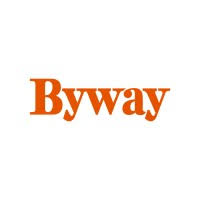DreamFlare AI, a new startup co-founded by former Google employee Josh Liss and documentary filmmaker Rob Bralver, has emerged from stealth mode with a mission to revolutionize content creation. The company aims to help creators produce and monetize short-form AI-generated content. Rather than developing its own AI technology, DreamFlare provides a collaborative studio environment where creators work with professional storytellers to utilize third-party AI tools like Runway, Midjourney, and ElevenLabs.
DreamFlare will offer two primary types of animated content:
- Flips: Firstly, comic book-style stories with AI-generated short clips and images that users can scroll through.
- Spins: Secondly, interactive, choose-your-own-adventure short films where viewers can influence the story’s outcome.
This approach is designed to further create a new space for storytelling, providing opportunities for creators to engage audiences with innovative formats.
The launch of DreamFlare comes amid growing concerns about AI’s impact on traditional film production jobs. A 2024 study by the Animation Guild highlighted that 75% of film production companies using AI have reduced or eliminated jobs. Despite these concerns, DreamFlare aims to create new revenue opportunities for creators rather than replacing existing jobs.
“It’s an opportunity for creators to democratize storytelling,” Liss said. “We are excited to give human beings the opportunity to leverage this tool to tell exciting new stories.”
DreamFlare has raised $1.6 million in funding, with support from FoundersX Ventures. The company claims to have creative partnerships with various entertainment industry executives, including those from Disney, Netflix, and Universal. Additionally, DreamFlare is working with “Oscar- and Emmy-winning filmmakers and showrunners,” who remain anonymous due to the controversy surrounding AI-generated content.
Platform Functionality
Creators on DreamFlare can use any AI tool with paid plans, but the platform maintains strict ethical and legal standards. DreamFlare reviews all submissions to ensure they are not based on copyrighted material and does not accept R-rated content. A DMCA takedown notice process is in place for copyright infringements.
Successful applicants collaborate with DreamFlare’s creative team, which includes former Disney and Universal executives. While creating content inspired by copyrighted intellectual property like “Star Wars” is prohibited, public domain characters are fair game, leading to titles inspired by stories like Little Red Riding Hood, Alice in Wonderland, Peter Pan, Frankenstein, and Thor.
Monetization and Community Engagement
Creators can earn money on DreamFlare through four primary methods:
- Platform revenue sharing.
- Ad revenue cuts.
- Tips from fans.
- A soon-to-be-launched marketplace for selling merchandise.
DreamFlare also offers a fan fund where followers can support content creators and participate in the production process. Higher-paying supporters can gain recognition in video credits, connect with creators on private Discord channels, and receive producer status for exclusive insights into content creation.
At launch, DreamFlare features around 100 content creators offering diverse content ranging from sci-fi and comedy to fantasy and mystery. DreamFlare’s premium membership costs $2.99 per month or $24 per year, with a limited-time offer of a one-year subscription for $9.99. Free weekly content is also available to attract and retain users.
DreamFlare aims to democratize storytelling by providing content creators with the tools and support to produce and monetize AI-generated video content. With its innovative content formats, strict ethical standards, and various monetization options, DreamFlare is poised to carve out a unique space in the entertainment industry.
See also: Etsy Introduces New Seller Policy With AI-Generated Item Guidelines


















